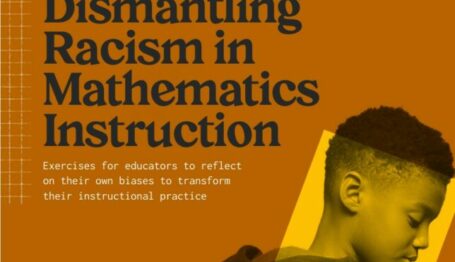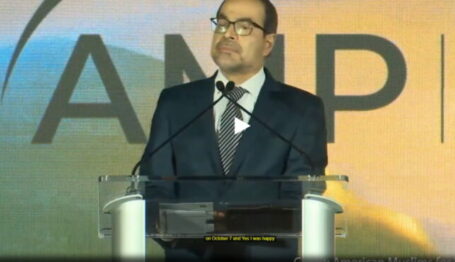Foundation Watch
New York Times’ 1619 Project: All the News that’s Fit for the MacArthur Foundation?


Editor’s Note: This article has been updated to reflect Bryan Stevenson’s 1995 MacArthur Fellowship.
The New York Times’s controversial “1619 Project” is a series of essays and features examining the history of slavery in the U.S. and how that still affects modern America. Commenting on the history of the project itself, the media giant credits the idea to staff writer Nikole Hannah-Jones “who won a MacArthur Grant in 2017,” and notes Ms. Hannah-Jones also brought aboard “Kellie Jones, a Columbia University art historian and 2016 MacArthur Fellow.”
Tens of thousands of acrimonious words have been written about 1619 since its release, but very little has been said about its connection to the MacArthur Foundation by way of the “MacArthur Fellows” program (the so-called “MacArthur Genius” grants). And—similarly—there is the affiliation with the Pulitzer Center (no relation to the famous journalism prize of the same name), the New York Times’ “education partner” for 1619. Pulitzer credits MacArthur as one if its “primary core” donors.
The fingerprints of this politically left-leaning “non-profit” seem to be all over this controversy.
The New York Times promoted 1619 non-controversially as “an invitation to reframe how the country discusses the role and history of its black citizens.” RSVP’s coming back on that “invitation” have included Republican U.S. House Speaker Newt Gingrich (once better known as Newt Gingrich, Ph.D. – a former history professor), who went on Fox News to say the “whole project is a lie.” Meanwhile, on the “other side” a lot of the lockstep left media is preoccupied not with the invitation to discuss the contents of the work, but instead with analyzing and criticizing right-of-center critiques of the project.
In a more nuanced analysis, a researcher at the libertarian Cato Institute said the effort was “an ambitious collaboration to address the painful but necessary aspects of American history” that nonetheless contains debatable “claims about the relationship between modern American capitalism and slavery.” This perspective (shared by other libertarians over at Reason magazine) gets the controversy correct: 1619 is a mixed bag of both valuable fact and vapid fiction.
On the valuable (albeit controversial) side is the essay by the executive director of the Equal Justice Initiative, Bryan Stevenson, (also a 1995 MacArthur Fellow) linking the legacy of slavery to policies that built our dysfunctional criminal justice system. In the so-called “home of the free” we have the world’s highest incarceration rate and put more of our people in cages than does communist China, which has 4.5 times our population and little of our respect for civil liberties. One need not buy all of Stevenson’s conclusions to agree on the importance of opening this wound to inspection and cleansing.
The worst example on the “vapid fiction” side is a 1619 essay crediting racism as the reason we still don’t have universal health care. Fun fact: 2008 Republican presidential nominee John McCain’s health reform proposal would have created universal taxpayer-subsidized coverage if McCain had been elected and implemented it. Historical irony: John McCain was not elected because—demonstrating something clearly NOT fueled by racism—a clear majority of Americans voted instead for a guy whose plan did not provide universal coverage, namely Barack Obama.
But a close runner up for worst 1619 essay is Princeton University sociologist Matthew Desmond’s effort to both assert the dubious “brutality” of American capitalism and tie that to slavery. To pick on just the funniest of the many problems with this, the private university paying him teaches fewer than 10,000 students with a $26 billion endowment—an amount that exceeds the annual GDP of decidedly not-capitalist Laos (population 6.7 million). Desmond’s likely one-percenter Princeton salary and tenure is the bitter fruit of “brutal” capitalism.
MacArthur awarded Desmond a genius prize in 2015.
The MacArthur prizes come with a $625,000 no-strings-attached grant. And—as might be expected—“genius” is a rare thing to find; so difficult, in fact, that sharp-eyed genius spotters can’t find it if your brain doesn’t skew to the political left. According to a 2015 profile in Chicago Magazine discussing the political bias of the MacArthur staff, the “interests of the foundation have tended to be fairly liberal” and there “could hardly be a more liberal grant, for example, than the MacArthur Fellowship.”
That isn’t an exaggeration. In 1968, genius struck serial Doomsday alarmist Paul Ehrlich. He co-founded Zero Population Growth and began predicting the “utter breakdown of the capacity of the planet to support humanity,” which he said would occur within the ensuing 15 years. But by the mid-1980s the world had added another billion-plus mouths to feed; still, famine has become a problem associated only with wars and bad policies inflicted on people by horrible (non-capitalist) societies. Ehrlich subsequently adjusted his End Times prophecies to fit the emerging field of climate change, and the folks at MacArthur (no doubt impressed by the flexibility of his genius) awarded him a fellowship in 1990.
The MacArthur Foundation—assets $6.2 billion, as of 2015—was funded by John D. MacArthur, a politically right-of-center billionaire banker who established the charity so as to keep big government from taking his money away via estate taxes. But, showing what was perhaps a lack of “MacArthur genius,” he failed to stipulate what should be done with the fortune before he died in 1978. His charity is now the plaything of capitalist-hating leftists.
Influencing media has become a big part of MacArthur’s business. A June 2018 report co-produced by the Shorenstein Center on Media, Politics and Public Policy at the Harvard Kennedy School, revealed MacArthur to be the sixth-largest funder of non-profit journalism for the years 2010-2015 (inclusive). Recipients of MacArthur media money included ProPublica and the left-leaning Center for Public Integrity (which currently sports a main page with a half-dozen links collectively headlined: “Trump’s Tax Cuts: The Rich Get Richer”).
There is nothing inherently wrong with mixing non-profit news sources with a for-profit newsroom like that at the New York Times. In theory, it could increase the important facts and perspectives reaching news consumers. As noted, there are essays in the 1619 Project that meet this standard, but they’re mingled with (to put it charitably) very debatable opinions, and (less charitably) fiction mislabeled as fact.
The New York Times masthead famously reads “All the news that’s fit to print.” At a minimum, that should mean fully disclosing to readers the ideological bias of sources—such as MacArthur—that get printed. At best, and just as mainstream media has done relentlessly for right-of-center donors, shouldn’t it also mean a critical, deep-dive research that reveals to readers the powerfully well-heeled funders of left-wing bias in media?



